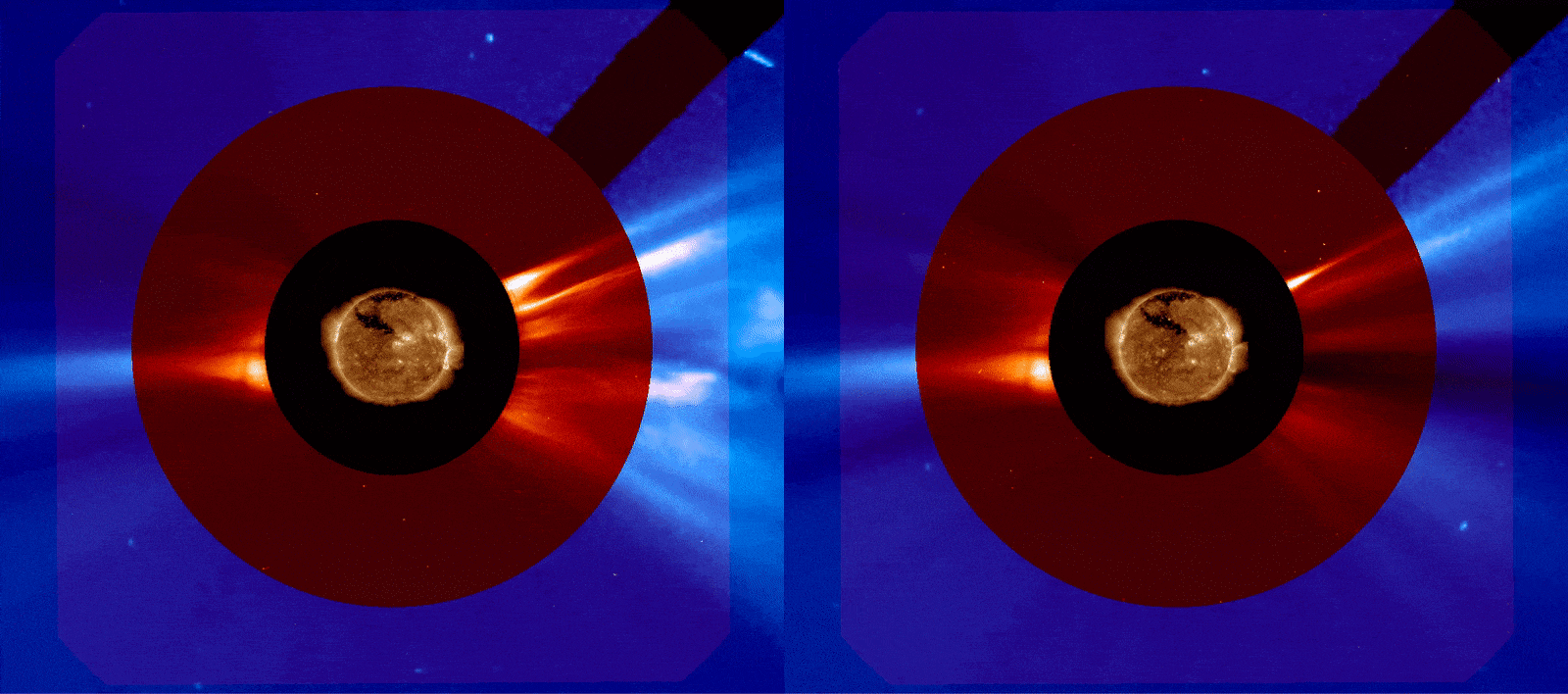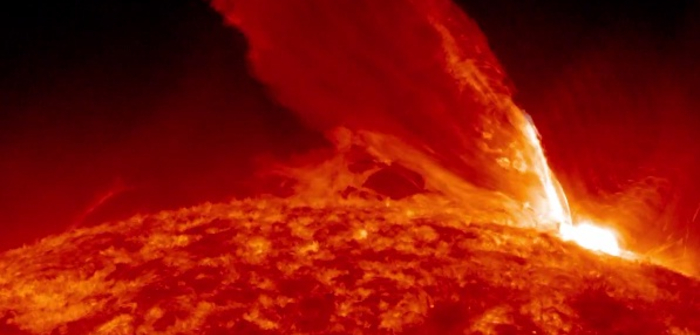A group of scientists says it has developed a method to study extreme space weather. The observation technology includes being able to detect powerful ejections of magnetized matter from the outer atmosphere of the sun, or fast coronal mass ejections. The results can help to better understand and predict the most extreme space weather events and their potential to cause strong geomagnetic storms that directly affect the operation of engineering systems in space and on earth.
The results of the study are published in The Astrophysical Journal and come as a result of investigation from scientists at Skolkovo Institute of Science and Technology (Skoltech), together with colleagues from the Karl-Franzens University of Graz & the Kanzelhöhe Observatory (Austria), the Jet Propulsion Laboratory at the California Institute of Technology (USA), Helioresearch (USA) and the Space Research Institute of the Russian Academy of Sciences (Russia).
The research says that coronal mass ejections are among the most energetic eruptive phenomena in our solar system and the main source of major space weather events. Huge clouds of plasma and magnetic flux are ejected from the atmosphere of the sun into the surrounding space with speeds ranging from 100km/s to 3,500km/s. These gigantic solar plasma clouds and the accompanying powerful shock waves can reach our planet in less than a day, causing severe geomagnetic storms, posing hazards to astronauts and technology in space and on Earth.
According to some experts, the study says, the damage from extreme space weather extending to Earth could cost up to several trillion dollars and the restoration of infrastructure and the economy could take up to 10 years. Thus, understanding and forecasting the most hazardous extreme events is important for the protection of society and technology against the global hazards of space weather.
In the current study, it was shown that the strongest and most intense geomagnetic storms are driven by fast coronal mass ejections interacting in the interplanetary space with another coronal mass ejection. Such interplanetary interactions among coronal mass ejections occur in particular when they are launched in sequence one after another from the same active region. This type of ejection can be characterized using the concept of clusters that also generates an enhanced particle acceleration compared with the isolated plasma cloud.
“Understanding the characteristics of extreme solar eruptions and extreme space weather events can help us better understand the dynamics and variability of the sun as well as the physical mechanisms behind these events,” said Dr Jenny Marcela Rodríguez Gómez, a research scientist at the Skoltech Space Center and the first author of the study.




